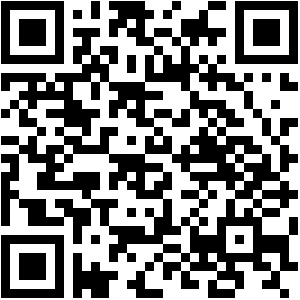Implementasi E-learning Berbasis Assessment For Learning Untuk Meningkatkan Performa Belajar Mahasiswa
DOI:
https://doi.org/10.23969/biosfer.v3i2.1292Keywords:
Assessment For Learning, E-learning, Feedback, Performa BelajarAbstract
Penelitian ini bertujuan untuk mengungkap pengaruh implemenetasi E-learning berbasis Assessment for learning terhadap performa belajar mahasiswa. Performa belajar mahasiswa terdiri atas hasil belajar, motivasi belajar dan aktifitas (keaktifan) belajar yang meliputi aktifitas bertanya dan memberikan tanggapan dalam proses diskusi di kelas. Metode yang digunakan untuk mencapai tujuan penelitian adalah metode true eksperimen. Desain yang akan digunakan yaitu posttest only control group – design. Kelompok eksperimen dan kontrol akan mendapatkan posttest. Partisipan penelitian ini adalah perwakilan mahasiswa semester 4 yang mengontrak matakuliah evaluasi dan asesmen. Instrumen penelitian yang digunakan meliputi soal kognitif untuk menjaring data hasil belajar, angket motivasi untuk menjaring data motivasi , dan lembar observasi keaktifan. Temuan penelitian ini menunjukkan bahwa elearning berbasis assessmen for learning (AfL) berupa pemberian feedback menunjukkan pengaruh yang signifikan terhadap hasil belajar, motivasi dan keaktifan. Perlakuan terhadap hasil belajar memiliki effect size sebesar 0.60 yang berarti sedang.
Downloads
References
Alruwais, N., Wills, G., & Wald, M. (2018). Advantages and Challenges of Using e-Assessment. International Journal of Information and Education Technology, 8(1), 34–37. https://doi.org/10.18178/ijiet.2018.8.1.1008
Amua-Sekyi, E. T. (2016). Assessment, Student Learning and Classroom Practice: A Review. Journal of Education and Practice, 7(21), 1–6.
Azizah, S., Khuzaemah, E., & Rosdiana, I. (2017). Penggunaan Media Internet eXe-Learning Berbasis Masalah pada Materi Perubahan Lingkungan untuk Meningkatkan Hasil Belajar Siswa dalam kehidupan sehari-harinya dan juga psikomotor ( keterampilan ) siswa . Proses belajar dapat materi dan bahan belajar yang. Scientiae Educatia: Jurnal Pendidikan Sains, (2005), 197–213. https://doi.org/DOI: http://dx.doi.org/10.24235/sc.educatia.v6i2.1957
Boffey, P. M. (1970). Japan (II): University turmoil is reflected in research. Science, 167(3915), 147–152. https://doi.org/10.1126/science.167.3915.147
Cox, P., & Godfrey, J. (1997). The importance of assessment procedures to student learning outcomes in religious education. Australian Journal of Teacher Education, 22(2).
Creswell, J. W., & Garrett, A. L. (2014). The methods research and the role of educators, 28, 321–333.
Don, H. (2017). Blending Formative and Summative Assessment in a Capstone Subject: ‘It’s not your tools, it’s how you use them’. Journal of University Teaching & Learning Practice, 14(3).
Dye Spradlin, K., Ackerman, B., & Dye, K. (2010). The Effectiveness of Computer-Assisted Instruction in Developmental Mathematics Recommended Citation. The Effectiveness of Computer-Assisted Instruction in Developmental Mathematics.
Garrison, D. R., & Vaughan, N. D. (2017). Blended learning in Highe Education Framework, Principle and Guidelines. European Journal of Education, 3(5), 29–40. https://doi.org/10.5281/zenodo.814302
Ghavifekr, S., & Rosdy, W. A. W. (2015). Teaching and Learning with Technology: Effectiveness of ICT Integration in Schools Simin. International Journal of Research in Education and Science, 1(2), 175–191. https://doi.org/10.1111/j.1365-2729.2011.00453.x
HPSC, H. P. S. C. (2009). OECD 2008. (Vol. 2010).
Huang, X., & Hu, X. (2015). Teachers’ and Students’ Perceptions of Classroom Activities Commonly Used in English Speaking Classes. Higher Education Studies, 6(1), 87. https://doi.org/10.5539/hes.v6n1p87
Istambul, M. R. (2016). E-Learning Design Activity to Improve Student’s Knowledge and Skills: A Case Study of Database Design Courses. International Journal of Information and Education Technology, 6(6), 423–429. https://doi.org/10.7763/IJIET.2016.V6.726
Karami, A., & Rezaei, A. (2015). An Overview of Peer-Assessment: The Benefits and Importance. Journal for the Study of English Linguistics, 3(1), 93. https://doi.org/10.5296/jsel.v3i1.7889
Kurniawan, F. A. (2017). Pengaruh Pembelajaran Berbasis Web Terhadap Motivasi dan Hasil Belajar Siswa Kelas X SMA Negeri Paguyangan pada Mata Pelajaran FIsika Pokok Bahasan Suhu dan Kalor. Scientiae Educatia: Jurnal Pendidikan Sains, 6, 1–7. https://doi.org/DOI: http://dx.doi.org/10.24235/sc.educatia.v6i1.1279
Logan, B., & Ed, D. (2015). Reviewing the value of self-assessments: Do they matter in the classroom ? Research in Higher Education Journal, 29(September), 1–11.
Lousie Cohen, Lawrence Manion, K. M. (2008). Research Methods in Education (Sixth Edit). Routledge. https://doi.org/10.1111/j.1467-8527.2007.00388_4.x
Martin, F., & Ndoye, A. (2016). Using Learning Analytics to Assess Student Learning in Online Courses. Journal of University Teaching & Learning Practice, 13(133). https://doi.org/10.1111/j.1540-5885.2008.00321.x
Mcfadzien, N. (2015). Why is effective feedback so critical in teaching and learning? Journal of Initial Teacher Inquiry, 1.
Moore, C., & Teather, S. (2013). Engaging students in peer review: Feedback as learning. Issues in Educational Research, 23(2 SPL), 196–211.
Ningsih, Soetjipto, B. E., & Sumarmi. (2017). Improving the Students’ Activity and Learning Outcomes on Social Sciences Subject Using Round Table and Rally Coach of Cooperative Learning Model. Journal of Education and Practice, 8(11), 30–37.
Özad, B. E., & Kutoǧlu, Ü. (2010). The use of the internet in media education. Turkish Online Journal of Educational Technology, 9(2), 245–255. https://doi.org/10.1097/01241398-199103000-00014
Patonah, S., Rahardjo, S. B., Cari, C., & Sajidan, S. (2017). Learning Model of Attention, Relevance, Confidence, Satisfaction (ARCS) Supported by Video Tutorial to Improve the STudents’ Learning Motivation in Vocational High School, 80(Icecsd), 185–189.
Ponte, E., Paek, P., Braun, H., Trapani, C., & Powers, D. (2009). Using assessment and feedback to enhance teachers ’ reported use of assessment and feedback. Journal of MultiDisciplinary Evaluation, 6(12).
Sanchez, J. D. (2011). Effect of Learning Activity on Students’ Motivation, Physical Activity Levels and Effort Persistence. Journal of Applied Measurement, 12(2), 106–123.
Shabani, K., Khatib, M., & Ebadi, S. (2010). Vygotsky’s Zone of Proximal Development: Instructional Implications and Teachers’ Professional Development. English Language Teaching, 3(4), 237–248. https://doi.org/10.5539/elt.v3n4p237
Ulva, N. L., Kantun, S., & Widodo, J. (2018). Penerapan E-Learning Dengan Media Schoology Untuk Meningkatkan Motivasi Dan Hasil Belajar Siswa Pada Kompetensi Dasar Mendeskripsikan Konsep Badan Usaha Dalam Perekonomian Indonesia. JURNAL PENDIDIKAN EKONOMI: Jurnal Ilmiah Ilmu Pendidikan, Ilmu Ekonomi Dan Ilmu Sosial,11(2), 96. https://doi.org/10.1016 / S0003 - 3472 (82)80068-7

























